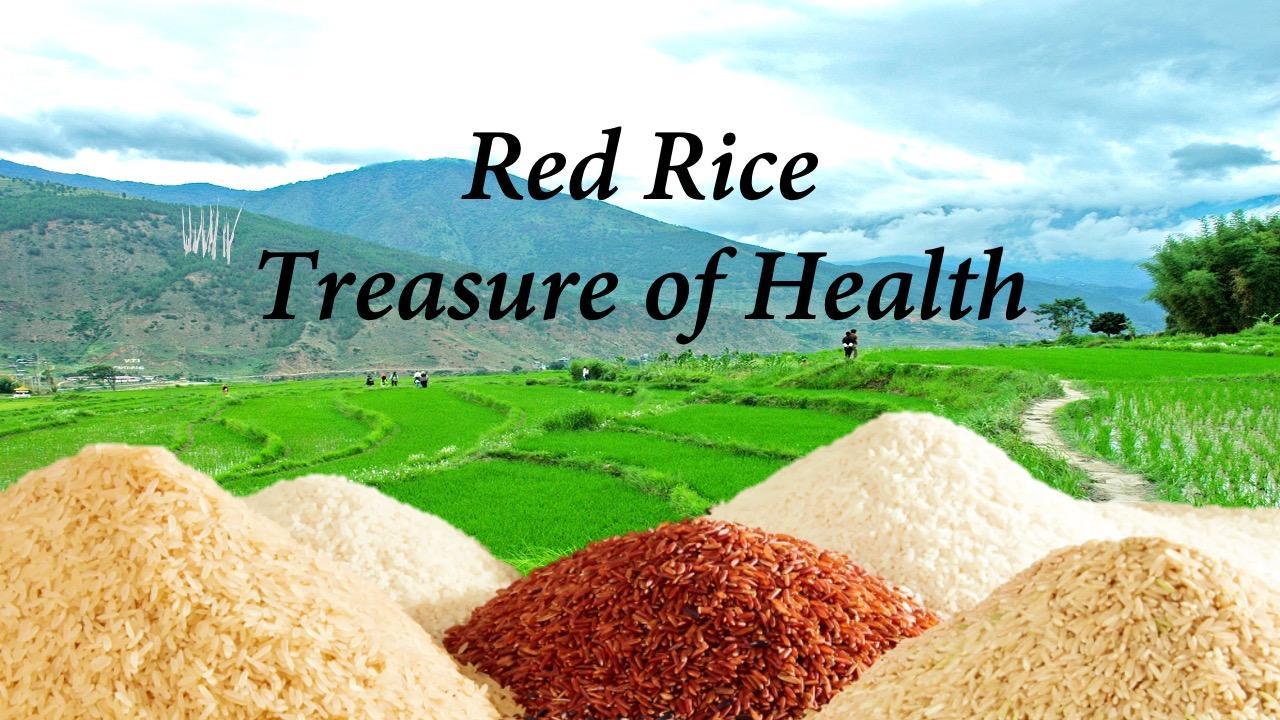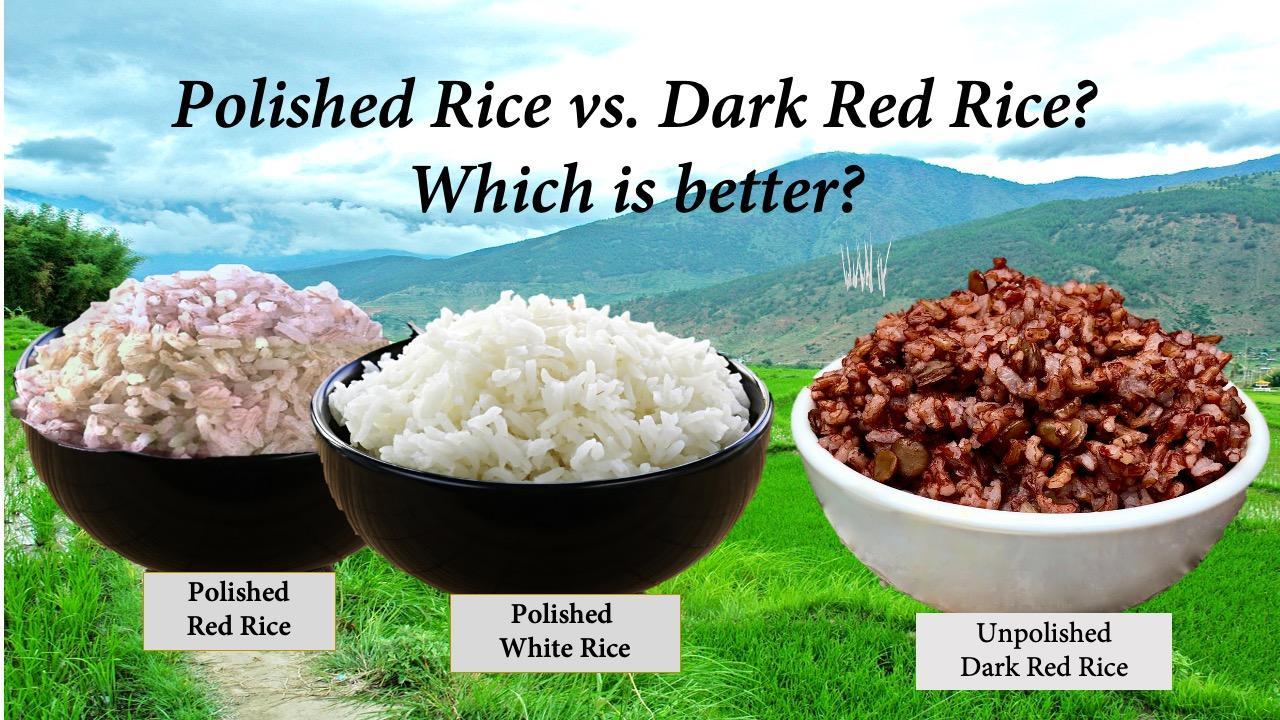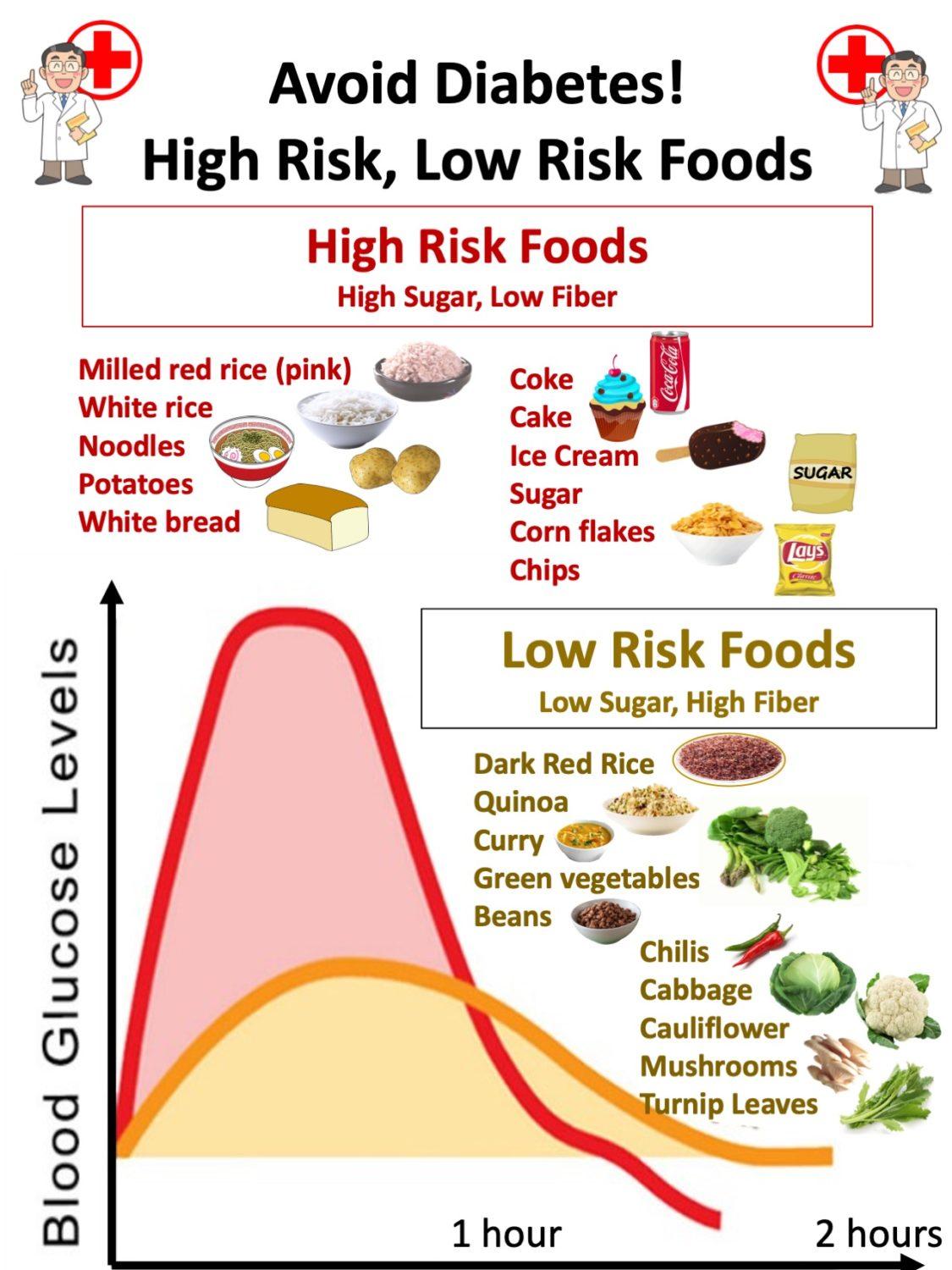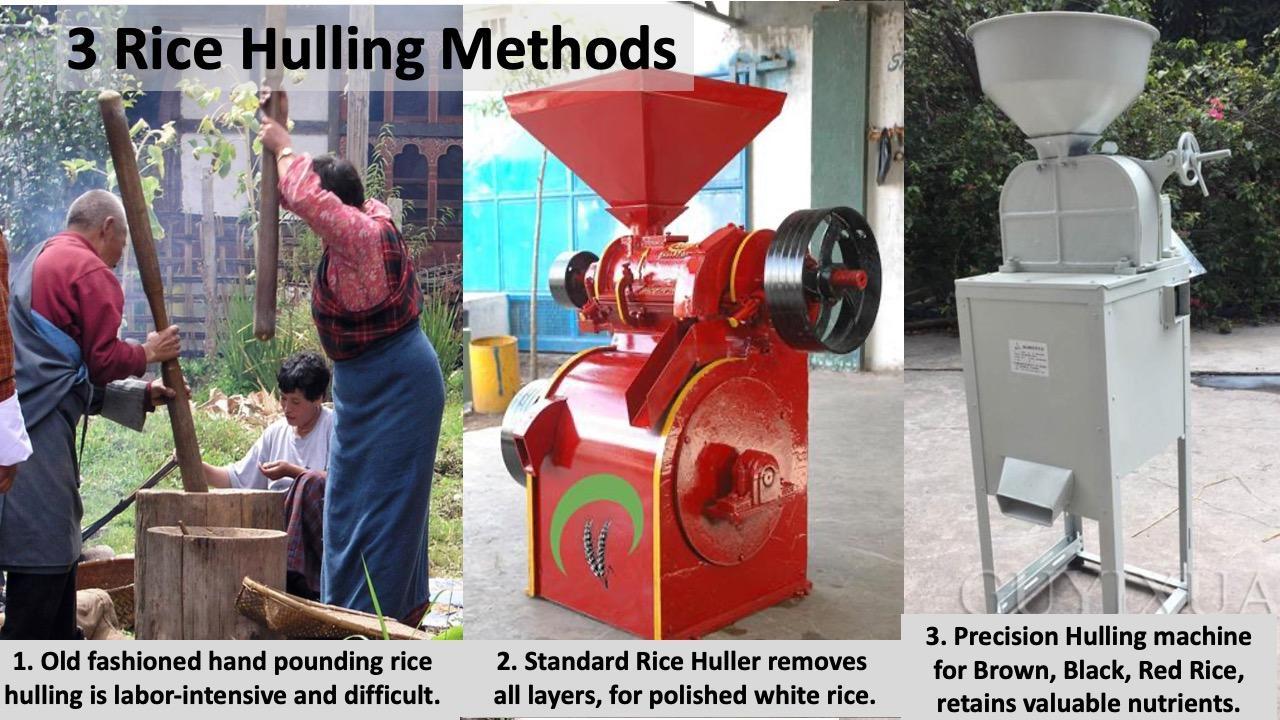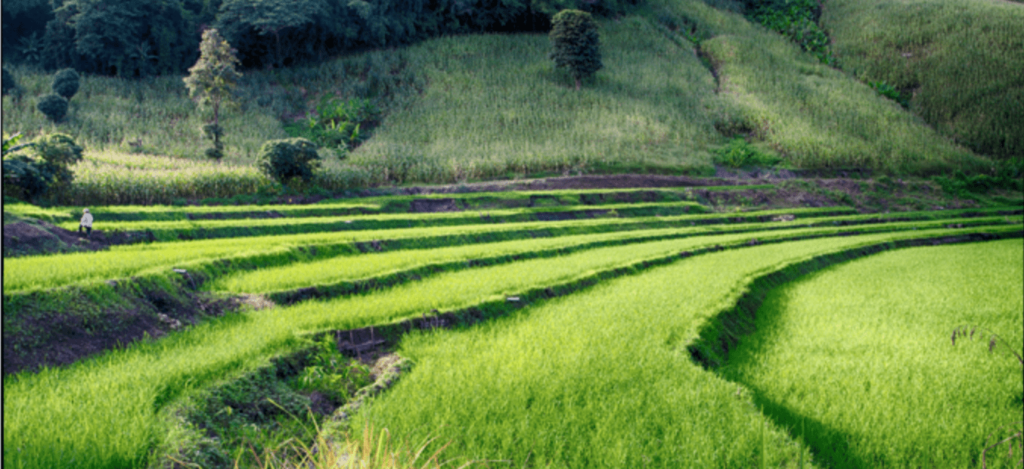Did you know that rice is the #1 primary staple food for half the world? Over 3.5 billion people depend on it for nutrition every day. So perhaps it is a good idea to study the best way to promote wellness with rice. I recently discovered that the first ancient ancestor of modern rice is said to have grown wild in the mountains of China. It was dark red and highly nutritious. About 10,000 years ago Oryza sativa seeds were first cultivated in Asia. This year we will probably consume about 500 million metric tons of rice worldwide.
Colonial Hulling Machines Turned the Red Rice Perfectly White
So, what happened to red rice? Well, about 500 years ago European traders came to Asia. Ships carrying British, Portuguese, and Dutch colonial merchants came with a plan to make a lot of money and become the rulers of the world. They cultivated vast acres of rice, and they used hulling machines to remove the thick outer husk. Their new machines polished the rice until it was perfectly white. The hulling process removed more than the hull. It also removed the outer layers, the bran and germ of the seed. Everybody loved the new white rice. It was beautiful, easier to cook, mild flavored, and became very popular.
But there were two unseen tradeoffs: 1) During polishing the rice lost almost all its nutrients. The machines polished away the outer layers of the seed, stripping away 71% of the nutrition, leaving only the white inner part. 2) After hulling, the new white rice was high-glycemic, high in sugar. It became a simple carbohydrate, which raised blood sugar very quickly. It was quite different from old-fashioned dark red rice that digested slowly and satisfied hunger for many hours. After a few hundred years, now we live in the 21st century, and most rice is white. People have almost completely forgotten the old dark red rice, accustomed to convenience and ease of white rice.
The Best Diabetes Prevention is Local Red Rice.
In modern times we face many diseases caused by glycemic foods, which are high-risk for diabetes. After 500 years of polished white rice, more than 450 million people worldwide suffer from diabetes. Many other diseases are also rising, due to lack of vitamins and minerals in diet. Surprisingly, it seems that our rising health problems follow the rise of industrial foods and the nutrients stripped from white rice. The solution to preventing the diabetes epidemic is right in our hands, with old-fashioned, local red rice.
Over Milling and Farm Chemicals Shorten Our Lives
Over the past 100 years, a steady dose of pesticides and herbicides on soil has reduced plant nutrients in many countries. Soil toxins cause damage to all living beings – humans, insects, and forests. By eating chemical-free, organic foods we can be confident to build our health and that of our children. When we compare the nutrients in original red rice and white rice, we see clearly how polishing causes suffering and disease. We can reduce our risk of diabetes by rediscovering the unpolished dark red rice of our great-great grandmothers. We can build a modern life of balanced, sustainable health and happiness in harmony with our heritage.
How Can Eating Dark Red Rice Protect us from Covid-19?
Doctors are discovering that Covid-19 is not fatal on its own. However, if a person suffers from one or more of these common diseases, Covid-19 can be fatal. These diseases are called co-morbidities. Surprisingly, Covid-19 comorbidity diseases may be rooted in the same missing nutrients we removed from white rice. The top most dangerous comorbidities to Covid-19 are: Diabetes, Hypertension, Cancer, and Heart Disease. If you have one or more of these illnesses, Covid-19 might be fatal. But if you are healthy then Covid-19 will most likely pass quickly. Hence, it is very important to encourage consumption of local whole foods rich in vitamins and minerals, instead of empty, processed foods.
What do we Choose? Convenience vs. Integrity?
We now hold in our hands many important tradeoffs. It comes down to a personal choice between convenience and integrity. What will we choose for ourselves and our children? The choice we make will affect our happiness, wellbeing, and long life for many generations to come.
Unpolished Dark Red Rice is Higher in Every Nutrient
Anthocyanin: The Dark Red Color is a Powerful Anti-Cancer food.
Dark red rice contains an important antioxidant Anthocyanin in its red pigment. This makes red rice a powerful anti-cancer food, good for everyone.
Fiber – Red rice has 667% more fiber than white rice.
Fiber is our friend. Say good-bye to constipation. Fiber keeps the digestive machine humming for clean intestines and healthy bowels. Fiber is the primary ingredient lacking in the modern diet. Low fiber leads to sticky buildup in the gut and obesity. Unpolished red rice helps prevent constipation. Its high fiber helps clean the lining of the intestines as it moves through, to clear mucous and promote elimination. White rice by comparison is soft and quick to digest. But it can get stuck and cause weight gain. Soft white rice cannot clean the intestines as it is lacking in fiber.
Prevent Constipation with high-fiber red rice.
The rate of constipation in the world is said to be almost 32.9% of humanity. Fiber in foods keeps our digestion moving and clean. Due to its high fiber, red rice is a definite aid to eliminate constipation.
However, healthy bowel response depends on three important things:
1) It is necessary to soak dark red rice 12-24 hours to remove indigestible seed coatings known as phytates. These are natural chemicals in raw seeds that irritate the sensitive intestines. Then rinse the rice well, drain, and cook. 2) You must adjust the cooking time, as dark red rice may require longer cooking from 30 to 45 minutes in a rice cooker. 3) A person must drink adequate clean water for health. Adults should drink 2 to 2.5 liters a day to hydrate the body and keep the bowels healthy.
Protein is 212% higher in red rice, for healthy muscle tone.
Our body needs amino acids for the growth and maintenance of cells and muscles. A low protein diet can cause unhealthy skin, thin hair, broken nails, increased risk of broken bones, and weak muscles.
Soaked or Sprouted Red Rice is rich in amino acids (GABA).
One excellent way to cook red rice for best nutrition is called GABA brown rice. GABA is short for Gamma-aminobutyric acid or germinated brown rice (GBR).
Soak or sprout the rice to soften for easier cooking and easy digestion.
This also maximizes protein and other nutrients in GABA rice:
Directions: Soak unprocessed rice in warm water (38 C) for 12-24 hours. Then rinse and cook as usual. This will stimulate germination to enable healthy enzymes in unprocessed rice. This increases the concentration of Gamma-aminobutyric acid (GABA) as a healthy superfood. That’s why unprocessed red rice is often used by bodybuilders who require good muscle development.
To prepare the most nutritious sprouted dark red rice:
- Wash the dark red rice and soak it in clean water for 24 hours
- Drain and air-dry it for a few more hours. The rice will sprout in the process.
- Cook 30 – 45 minutes and eat.
No Sugar Spike with Unpolished Red Rice.
White rice is a simple carbohydrate that changes to simple sugar as we chew it. This causes a glycemic effect, a rapid spike in blood sugar. High blood sugar is a serious risk for diabetes and other diseases. Fortunately, dark red rice is low glycemic, lower in sugar. We digest it more slowly, so it keeps blood sugar safely balanced.
Red Rice Has Far More Minerals than White Rice
Iron: 341% higher in red rice, for healthy oxygenated blood.
Iron is needed to bring oxygen to cells via the blood. A lack of iron can lead to serious health problems, fatigue, low oxygen, and fast aging. Anemia, or low oxygen blood, affects 33% of the world’s population, mostly due to iron deficiency.
Zinc: 350% higher in red rice, to prevent tuberculosis and malaria.
Zinc is a trace element required for a healthy immune system. A lack of zinc can make a person more susceptible to disease. Zinc deficiency causes slow growth, low appetite, low immune function, and diarrhea. Zinc deficiency affects 31% of the world’s population, especially in rice consuming areas of Asia. Insufficient Zinc is responsible for lung infections such as tuberculosis, 18% of malaria and 10% of diarrhea. (But since zinc absorption is inhibited by seed coatings in unsoaked rice, for optimal health benefits, first soak your red rice for 12-24 hours before cooking.)
Manganese: 286% higher in red rice, prevent diabetes and stabilize blood sugar.
Manganese is a critical mineral that helps reduce inflammation and maintain blood sugar level. Manganese deficiency causes poor growth, low reproduction, skeletal deformities, low sugar tolerance, poor carbohydrate and fat metabolism.
Magnesium: 347% higher in red rice, to prevent diabetes and hypertension.
Magnesium is crucial to keep blood pressure normal, bones strong, and heart beat steady. In the USA 75% of adults are believed to be deficient in magnesium, which is linked to osteoporosis, inflammation, heart disease, and diabetes.
Potassium: 208% higher in red rice. Prevent hypertension and heart disease.
One of the most important minerals in the body, potassium helps regulate fluid balance, blood pressure, muscle contractions, and nerves. It helps regulate moods and mental balance. Potassium deficiency is linked to hypertension, heart disease, and risk of stroke. Hypertension is currently one of the most urgent public health problems in the world.
Thiamine, Vitamin B1, 1667% higher, for a strong nervous system.
Thiamine is a cofactor (molecular helper) for enzymes that digest sugars and carbohydrates to release energy for growth and nerve function. It builds strong nerve myelin sheath. Vitamin B1 deficiency causes beriberi, low energy levels, weak nerves and muscle.
Calcium, 183% higher in red rice, for heathy bones.
Calcium deficiency has been linked to depression, mood disorders, poor blood clotting, and weak muscles. Almost half the people in rice consuming nations are deficient in calcium, especially important for growing children.
Copper, 212 % higher in red rice, for healthy red blood cells.
Good copper levels support healthy bones and prevent osteoporosis. Deficiency in copper can be linked to anemia, low white blood cells, low immunity
Niacin – 176% higher in red rice, for healthy blood sugar, efficient metabolism.
This critical nutrient converts carbohydrates into glucose, digest fats and proteins. Niacin keeps the nervous system working properly. Niacin deficiency can cause depression, fatigue, and poor brain function.
Vitamin B6 – 300% higher in red rice, for brain health.
Adequate pyridoxine levels can prevent depression, boost brain function, and reduce Alzheimer’s risk. It assists blood hemoglobin, protein metabolism and the creation of new red blood cells. Vitamin B6 deficiency is associated with skin rashes, mood changes, low energy, and epileptic seizures.
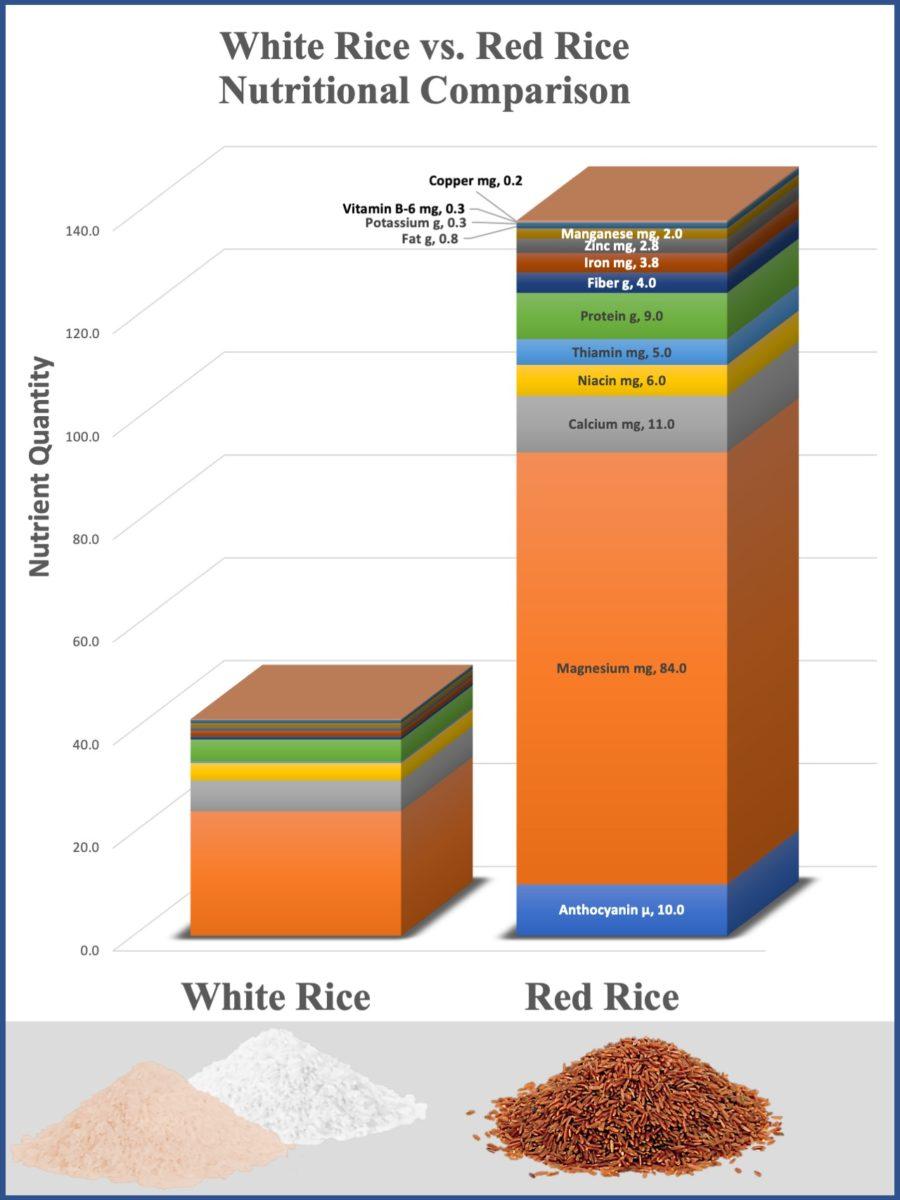
This chart shows a 71% loss in nutrients, the total aggregate differences between polished white rice and red rice. Polished red rice (light pink color) is identical to white rice in nutritional value.
Polished Rice lost 71% of its nutrients!
Dark red rice is superior in all nutrients, many of which are deficient in modern diets. But out of habit, we throw away the most valuable layers to make it white. Notice below, the minerals lost in white rice just might be the same nutrient deficiencies that are at the root of common diseases.
These are also the same diseases that increase risk of death from Covid-19, called comorbidities. If you have one of these illnesses, Covid-19 can be fatal. However, if you are healthy, Covid-19 will most likely pass quickly.
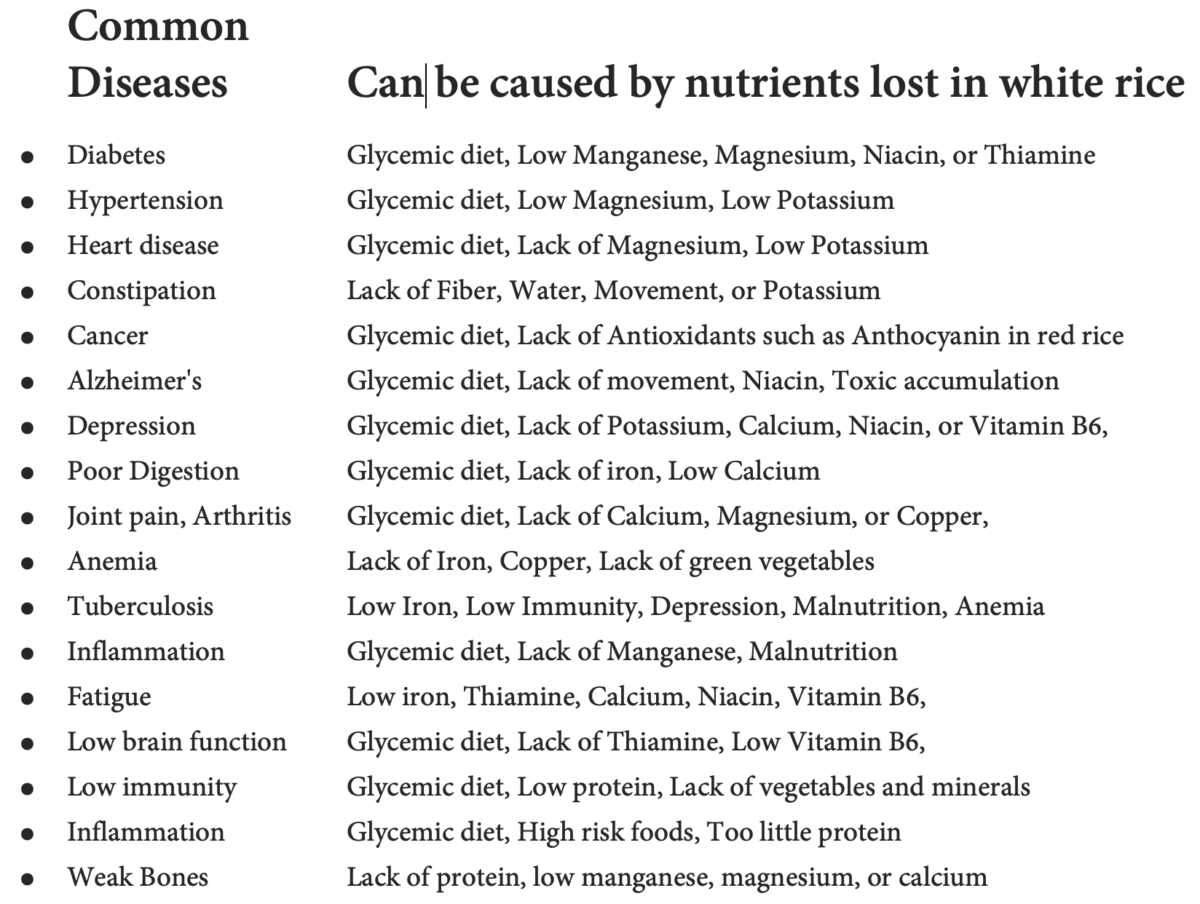
The above illnesses are quite common today. But two generations ago they were almost unknown. How many people do you know who suffer from one of the above diseases? What kind of rice do they eat?

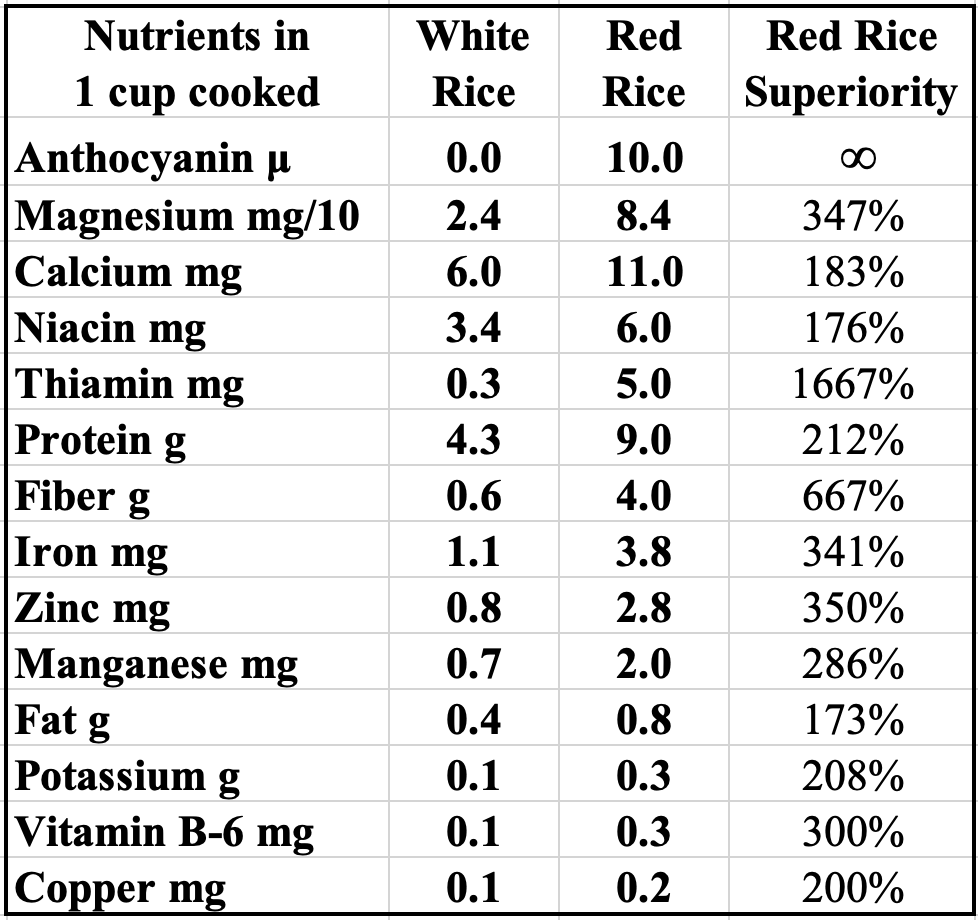
This chart shows the huge nutritional difference in dark red rice compared to white rice.
Three choices in Hulling Machines
Many types of rice hullers are available for small farms. Some are produced in India or China. We should look for a precision huller intended for brown, black, and red rice, because these can protect the nutrient-rich outer layers of the rice. For a few hundred dollars, every farm can have a precision hulling machine, to produce dark color red rice for health. Below is a traditional “Desi” used in India to hull the rice by hand. This method retains the minerals, unlike new machines that remove all the outer layers and strips away nutrients.
Colonial Times are Over, Time to Take Back Our Farms?
Bhutan is blessed, The only country in Asia that was never colonized, Bhutan kept the British out through intelligent negotiation, unmatched archery, and pure Buddhism. In the 20th century, many other Asian countries finally succeeded in sending away their European colonial rulers. Newly independent countries strive to find pride and value for their rich cultural heritage. However even after sending them away, Asians have embraced many of their rulers’ habits, detrimental to health. For example, bread, cookies, sugar, flour, white rice, coffee, noodles, chips, and high-glycemic foods are still destroying our health worldwide. Maybe instead of going home, the Europeans left a tradition of bad habits, addiction, and love of money. Negative thoughts and poor lifestyle take a heavy toll on our children, as each generation struggles to find the best way out of bondage. Engrained poor habits are like strong chains of slavery, harder and harder to break for each successive generation.
Yes, they unwillingly granted “independence”, but now they control hearts and minds in other ways. Advertising, multi-national corporations, junk food, movies, NGO’s, media, and dominant World Health policies are now the Western presence. Perhaps it isn’t independence at all, and it’s time to be transparent and call it what it actually is. Colonialism in modern times comes under the guise of controlling education, farming chemicals, medical practices, and selling trillions in cheap industrial products. I believe the solution is for each tradition to think independently about how to sustain their own valuable heritage and wisdom. Maybe it’s time to take back our farms to insist on safe, sustainable cultivation, chemical-free, and to eat our own local whole foods.
Future Generations Will Thank Us
Back to the rice. Old fashioned dark red rice is a gift from our great great grandmothers, giving high satisfaction without weight gain. Everyone notices the difference in dark red rice. Over time, our health can benefit greatly. When we understand the sacred heritage and nourishment in our red rice, we can overcome the common objections. “It’s too slow to cook.” means we learn to plan, and soak the day before. “It gives me constipation.” means we must listen carefully to our body, exercise a bit more, drink enough water, and over time the body will adjust. “I don’t like the chewy texture.” means we are free to eat white rice, knowing that we risk our health. Or we can take a deep breath and remember our great-great grandmother. After all, enjoyment is in the mind. We can think of her as we savor the chewy texture and its flavor fills our tummy with stable nourishment for hours.
I’m just a beginner at understanding rice, I believe we should know the history of how original red rice became white. Then people can understand the benefits of dark red rice at every meal. Many people depend on rice every day for good life. Soaked dark red rice is a superior food. To eat it every day with confidence will give our families vibrant health for many generations. The flavor is rich, nutty and satisfying. Where can you find dark red rice in your community? Just try it and taste the difference.
About the Author
Sri Jana is a researcher, intuitive medium, medical channel, author, and teacher, aka Jane Barthelemy. Born and raised in the USA, she is a 50-year student of Buddhism. She is the author of many articles on healing, and the author of two cookbooks for a low-glycemic healthy life. Her food and lifestyle website JanesHealthyKitchen.com recently won the coveted CV Magazine award for “The Most Innovative Food & Lifestyle Blog in North America”. Her travel blog can be found at www.FiveSeasonsMedicine.com. She lives in Paro, Bhutan with her Bhutanese husband, D. Thinley.
Resources:
- https://www.ncbi.nlm.nih.gov/pmc/articles/PMC6043450/
- https://www.icar-iirr.org/journal%202017-10-9.pdf
- https://www.ncbi.nlm.nih.gov/pmc/articles/PMC3551059/
- https://www.health.harvard.edu/blog/sprouted-grains-nutritious-regular-whole-grains-2017110612692https:/
- /www.spartandiet.org/blog/2013/6/3/sorry-paleo-people-grains-are-part-of-the-human-diet
- https://www.ncbi.nlm.nih.gov/pmc/articles/PMC5816734/
- https://karalydon.com/healthy-eating/rice-nutrition-varieties-cooking/
- https://pubmed.ncbi.nlm.nih.gov/29514441/
- https://www.healthline.com/nutrition/healthiest-rice#recommendation
- https://www.ncbi.nlm.nih.gov/pmc/articles/PMC6025443/
- https://www.sciencedirect.com/science/article/pii/S0924224414002386
- https://www.ncbi.nlm.nih.gov/pmc/articles/PMC3996977/
- https://blogs.scientificamerican.com/observations/humans-feasting-on-grains-for-at-least-100000-years/
- http://factsanddetails.com/world/cat54/sub343/entry-6026.html#chapter-10
- https://www.nationalgeographic.com/culture/food/the-plate/2015/09/11/ancient-oat-discovery-may-poke-more-holes-in-paleo-diet/
- https://www.westonaprice.org/health-topics/food-features/be-kind-to-your-grains-and-your-grains-will-be-kind-to-you/
- Sun Q., Spiegelman D., van Dam R.M., Holmes M.D., Malik V.S., Willett W.C., Hu F.B. White rice, brown rice, and risk of type 2 diabetes in US men and women. Arch. Intern. Med. 2010;170:961–969. doi: 10.1001/archinternmed.2010.109. [PMC free article] [PubMed] [CrossRef] [Google Scholar]
- http://ricepedia.org/rice-as-food/white-and-brown-rice
- https://www.researchgate.net/publication/319238117_Rice_Milling_Technology_to_Produce_Brown_Rice
- Panneerselvam P., Binodh A.K., Kumar U., Sugitha T., Anandan A. Microbial association in brown rice and their influence on human health. In: Manickavasagan A., Santhakumar C., Venkatachalapathy N., editors. Brown Rice.Springer International Publishing; Cham, Switzerland: 2017. pp. 159–181. [Google Scholar]
- https://archaeologynewsnetwork.blogspot.com/2010/10/stone-age-flour-found-across-europe.html
- journal 2017-10-9.pdf
- https://en.wikipedia.org/wiki/Brown_rice
- https://au.news.yahoo.com/the-difference-between-white-brown-and-red-rice-171300139.html
- https://food.ndtv.com/food-drinks/white-rice-brown-rice-or-red-rice-which-one-is-the-healthiest-747933
- https://www.chicagotribune.com/dining/ct-xpm-2013-07-24-ct-food-0717-gaba-rice-20130724-story.html
- https://www.iflscience.com/plants-and-animals/ancient-people-ate-porridge-32000-years-ago/
- https://sciencenordic.com/archaeology-denmark-food/stone-age-hunters-liked-their-carbs/1380102
- https://journals.plos.org/plosone/article?id=10.1371/journal.pone.0148136
- https://www.momsacrossamerica.com/arsenic_and_heavy_metals_found_in_world_s_most_popular_weed_killer
- https://www.sciencedirect.com/science/article/pii/S221475001730149X
- https://www.asianscientist.com/2012/03/health/white-rice-associated-with-type-2-diabetes-risk-in-asian-populations-2012/
- https://www.philstar.com/business/agriculture/2008/03/23/51479/sprouted-pigmented-rice-rich-source-nutrients
-
https://www.sciencedirect.com/science/article/pii/S2590259819300469
- https://www.sciencedirect.com/science/article/pii/S2590259819300469
- https://foodrevolution.org/blog/arsenic-in-rice/
- Mineral content of dehulled and well-milled pigmented and non-pigmented rice varieties in the Philippines: International Food Research Journal 25(5): 2063-2067 (October 2018) Journal homepage: http://www.ifrj.upm.edu.my
- Fairhurst T., Dobermann A. Rice in the global food supply. Better Crops Int. 2002;16:3–6.[Google Scholar]
- Zareiforoush H., Minaei S., Alizadeh M.R., Banakar A. Qualitative classification of milled rice grains using computer vision and metaheuristic techniques. J. Food Sci. Technol. 2016;53:118–131. doi: 10.1007/s13197-015-1947-4. [PMC free article] [PubMed] [CrossRef] [Google Scholar]
- Kale S.J., Jha S.K., Jha G.K., Sinha J.P., Lal S.B. Soaking induced changes in chemical composition, glycemic index and starch characteristics of basmati rice. Rice Sci. 2015;22:227–236. doi: 10.1016/j.rsci.2015.09.002. [CrossRef] [Google Scholar]
- Chen H., Siebenmorgen T.J., Griffin K. Quality characteristics of long-grain rice milled in two commercial systems. Cereal Chem. J. 1998;75:560–565. doi: 10.1094/CCHEM.1998.75.4.560. [CrossRef] [Google Scholar]
- Vetha Varshini P., Azhagu Sundharam K., Vijay Praveen P. Brown rice—Hidden nutrients. J. Biosci. Tech. 2013;4:503–507. [Google Scholar]
- Liu L., Guo J., Zhang R., Wei Z., Deng Y., Guo J., Zhang M. Effect of degree of milling on phenolic profiles and cellular antioxidant activity of whole brown rice. Food Chem. 2015;185:318–325. doi: 10.1016/j.foodchem.2015.03.151. [PubMed] [CrossRef] [Google Scholar]
- Ohtsubo K.I., Suzuki K., Yasui Y., Kasumi T. Bio-functional components in the processed pre-germinated brown rice by a twin-screw extruder. J. Food Compos. Anal. 2005;18:303–316. doi: 10.1016/j.jfca.2004.10.003. [CrossRef] [Google Scholar]
- Wu F., Yang N., Touré A., Jin Z., Xu X. Germinated brown rice and its role in human health. Crit. Rev. Food Sci. Nutr. 2013;53:451–463. doi:
- 1080/10408398.2010.542259. [PubMed] [CrossRef] [Google Scholar]
- Cho D.H., Lim S.T. Germinated brown rice and its bio-functional compounds. Food Chem. 2016;196:259–271. doi: 10.1016/j.foodchem.2015.09.025. [PubMed] [CrossRef] [Google Scholar]
- Foster-Powell K., Holt S.H., Brand-Miller J.C. International table of glycemic index and glycemic load values: 2002. Am. J. Clin. Nutr. 2002;76:5–56. doi: 10.1093/ajcn/76.1.5. [PubMed] [CrossRef] [Google Scholar]
- A map of rice genome variation reveals the origin of cultivated rice, https://www.nature.com/articles/nature11532
- https://news.cornell.edu/stories/2007/08/todays-white-rice-mutation-spread-early-farmers
- https://www.asianscientist.com/2015/09/in-the-lab/origins-black-rice/
- Oikawa et al. (2015) The Birth of a Black Rice Gene and Its Local Spread by Introgression.
- https://www.npr.org/sections/thesalt/2015/10/05/445316722/how-forbidden-black-rice-flourished-for-millennia
- https://phys.org/news/2016-07-grain-rice-ancient-dna-view.html
- http://www.jnmjournal.org/journal/view.html?doi=10.5056/jnm15187
- https://vigyanashram.files.wordpress.com/2015/02/rice-de-husking-lab-trial-report.pdf



